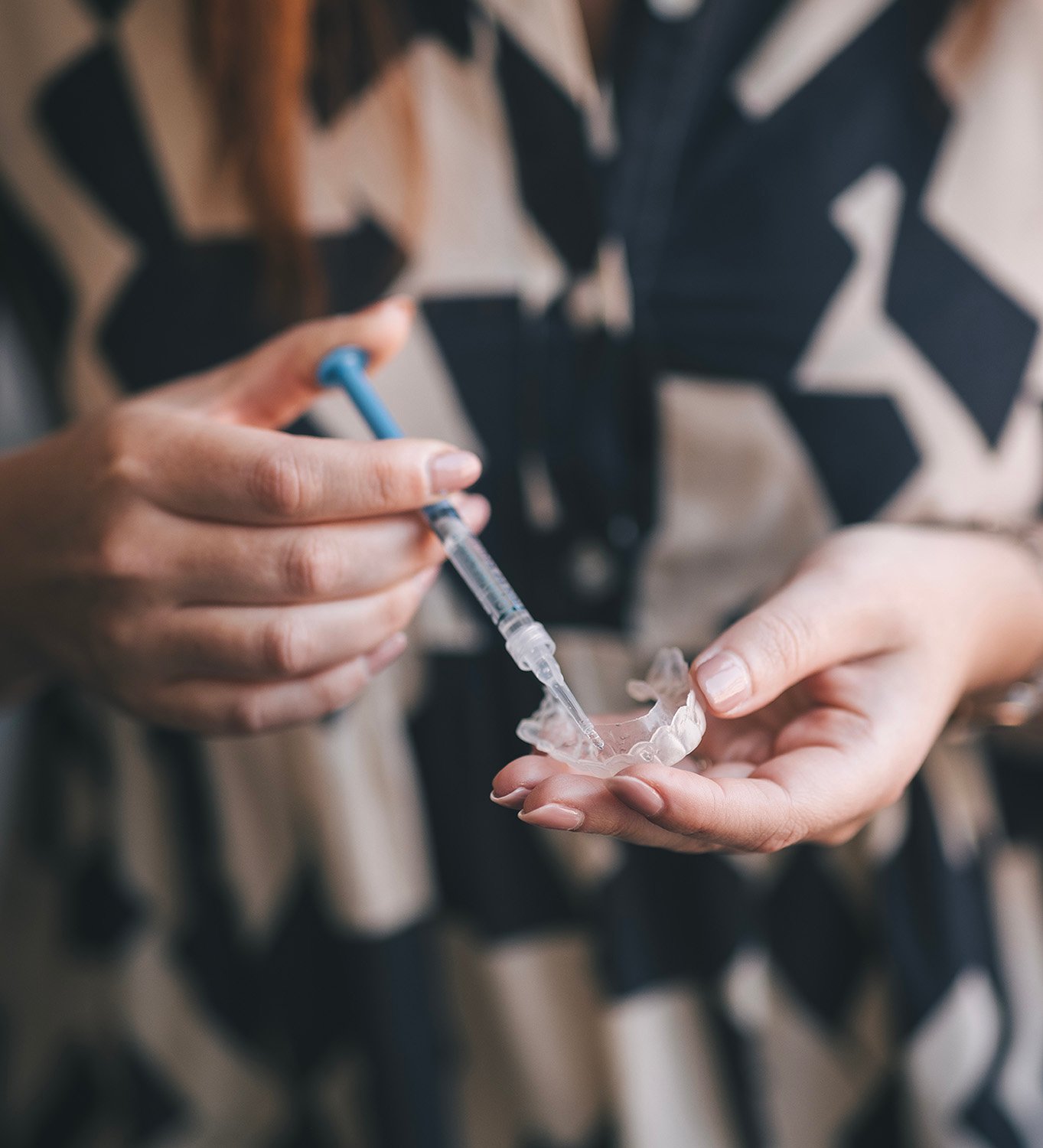Teeth whitening
What is teeth whitening?
Teeth whitening is an essentially aesthetic, effective and minimally invasive treatment used to whiten the tooth’s outermost surface.
It is divided into two categories: whitening of vital and non-vital teeth; this treatment can be performed on vital or endodontically treated teeth.
Teeth whitening is carried out by applying a gel to the tooth surface. Where the contact of the active ingredient in the gel with the enamel surface causes a change in the colour of the tooth, resulting in a whiter smile.
The main and most used types of Teeth Whitening are in-office and out-patient whitening.

In-office teeth whitening
In-office teeth whitening consists of two stages: one in the clinic and another at home. The step-by-step procedure is as follows:
- Photographs and initial colour evaluation;
- Taking of dental impression or intraoral scan to make the bleaching trays;
- Placing a lip retractor, isolating the gums and applying the gel on the tooth surface for 60 minutes;
- Delivery of the kit with the trays and the whitening gel to the patient to complete the treatment at home until the final result is achieved;
- Photographs and evaluation of the final colour.
Outpatient teeth whitening
Outpatient teeth whitening consists of having this treatment performed by the patient at home, always through a whitening gel applied in trays. The process goes as follows:
- Photographs and initial colour evaluation;
- Taking of dental impression or intraoral scan to make the bleaching trays;
- Delivery of the kit with the trays and the bleaching gel to the patient to carry out the treatment at home;
- Photographs and evaluation of the final colour.
White teeth? For how long?
The durability of this treatment depends, essentially, on the post-treatment care. In particular habits such as exposure to more pigmented foods and drinks (coffee, tea, soft drinks) or smoking, which can cause the appearance of stains and therefore change the colour of the tooth.
According to the studies, the tooth will not return to its initial colour once the whitening has been carried out.
Are there any side effects?
The main side effect associated with this treatment is tooth sensitivity. However, this is usually temporary and disappears once the treatment is completed.
When treatments are performed without the monitoring of a professional, there are also other consequences. We, therefore, recommend that you always seek the advice of a dentist to avoid causing irreversible damage to your teeth.
Who is it aimed at?
Teeth whitening can be performed on adults But is not recommended for pregnant women, children and teenagers. This non-recommendation concerns the need for studies confirming its safety in these patient groups.
Teeth whitening and other treatments
When other treatments have already been conducted in visible areas, such as dental restorations, crowns or veneers, replacing them after the Teeth Whitening is recommended. The reason for this is that these materials are not whitened. Therefore, after the Teeth Whitening, the differences between the whitened and the un-whitened areas may result in a less harmonious smile concerning its colour.

Dr. André Silva
Dental Hygienist

Dr Irene Rocha
Dental Hygienist

Dr Marta Gameiro
Dental Hygienist

Dr Mónica Duarte
Dental Hygienist

Dr Rita Alves
Dental Hygienist

Dr Sofia Morgado
Dental Hygienist
